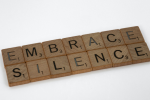April 15, 2021
Liturgy Ahead

In my book, Behold What You Are: Becoming the Body of Christ, I suggest defining liturgy as “the work of the people and a public work, expressing and forming of the Body of Christ, given for the world.” As such, whenever we find ourselves planning or preparing for a liturgy, we might ask:
- How is this liturgy engaging the people?
- How is this liturgy public?
- How will this liturgy express who we are as the Body of Christ?
- How will it form us as the Body of Christ, given for the world?
We can apply these questions to everything from how we welcome to how we sing, from how we collect the offerings to how we send people forth.
In COVIDtide, it has been hard to hold together the Body of Christ. Many churches have been worshipping in livestreamed or pre-recorded video, with a lot of good content, but limited connection or engagement among the members of the Body. We have offered Zoom coffee hours and forums, seeing and hearing from those who participate. But in the big livestream formats, it’s been hard to tell whether folks are dipping or marinading in whatever is offered.
Churches that have worshipped on Zoom have been able to see who is present, exchange news and needs of the week, watch babies grow and more. In some ways, because we are all attending the same service and can see everyone who is there, we have been even more aware of each other through the seasons of the past year than when we were meeting in person. Most will agree that singing together is sorely missed, though, as well as the formative spontaneous or lingering conversations before or after the liturgy. Oh, and simply reciting the Creed in unison.
Whatever the format, online worship has allowed folks who live far away or who are otherwise stranded at home to participate. They have very much been a part of the Body gathered. Online worship has been even more public than in-person, in-the-building worship.
So what happens next? How do we bring and hold the Body together, even make it stronger as we transition to the “most everyone is vaccinated” season ahead?
Some churches have small enough congregations that they can safely gather indoors, six or more feet apart. Some larger churches are planning to hold two separate services, offered at the same time, one in-person outdoors and the other live-streamed with a recorded sermon (though the livestreamed services are often recorded as well and can be watched any time). Other churches are going to gather primarily outdoors and in person, with a camera set up in a corner so the folks at home can watch. This is a kind of hybrid liturgy.
There’s also a more complex hybrid possibility, with the people gathered in person engaging with the people gathered online. One camera is stationary, and maybe two-three people on site hold iPads tuned into the Zoom, each iPad showing a different aspect of the in-person gathering. One reading comes through the screen from someone three counties (or states) away. The next reading comes from someone standing at the lectern in the outdoor chapel. The music and singing are live and on site, rather than recorded, and everyone is encouraged to sing along, wherever they are (though the folks on Zoom probably need to be muted while they sing so everyone stays on the same line).
In many ways, this hybrid worship is the best answer to the four questions asked above:
- The people at home and online are all engaged and engaged with one another.
- The online aspect of the liturgy is accessible to everyone everywhere. Very public.
- Participants are mindfully working hard to stay together as one Body, though they are apart physically
- How those participants are then sent forth into the world will largely depend on what is said and done while they are gathered!
There are downsides to this hybrid model, of course. Significantly, how do you keep the big screen and microphones from distracting from the worship of those who are gathered in person? Second, how do you help keep the folks at home from feeling like second-class worshippers? And third, how do you plan and execute this kind of worship without burning out the clergy and planners?
Whatever we do in the season ahead, it is important that we honor the limited bandwidth of clergy and lay leadership in these days. It’s been a hard year. Creative juices and energy may simply be dried up. Clergy need to do what they need to do to maintain their equilibrium. First step in liturgy planning ahead, may very well be to encourage and support real vacations and time off soon!





